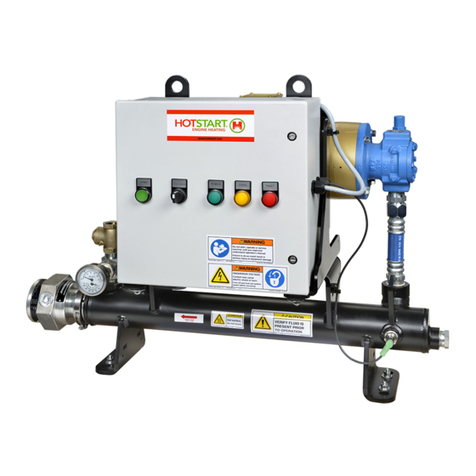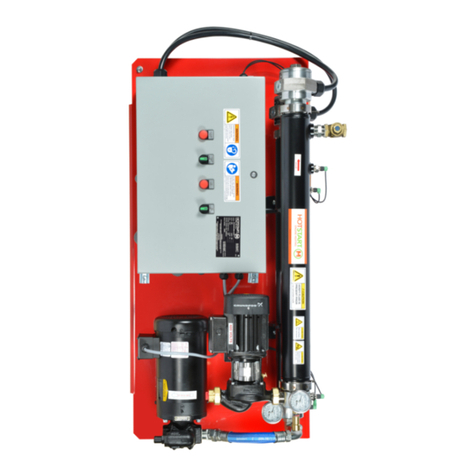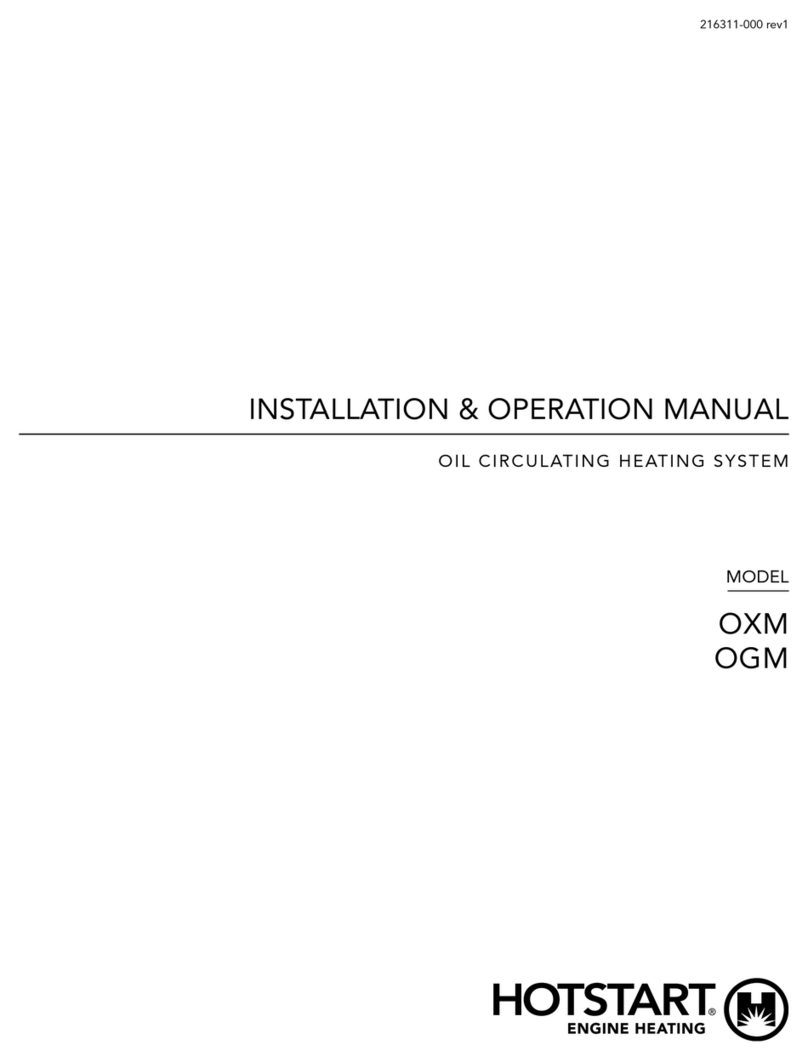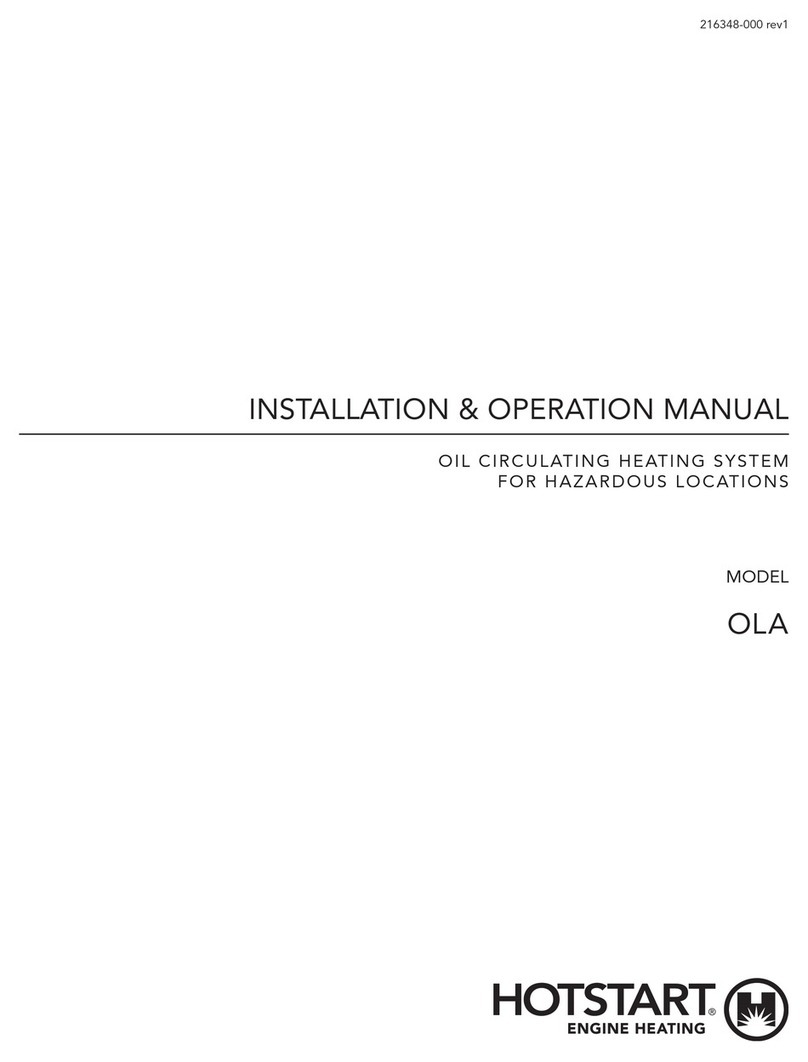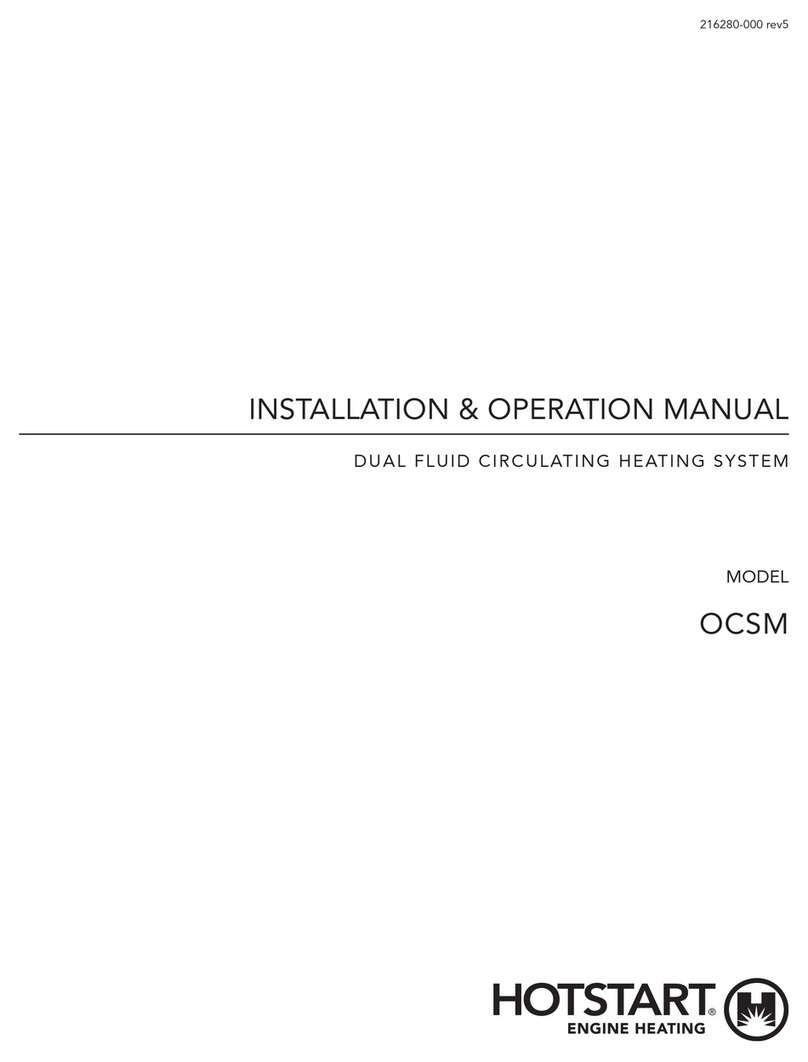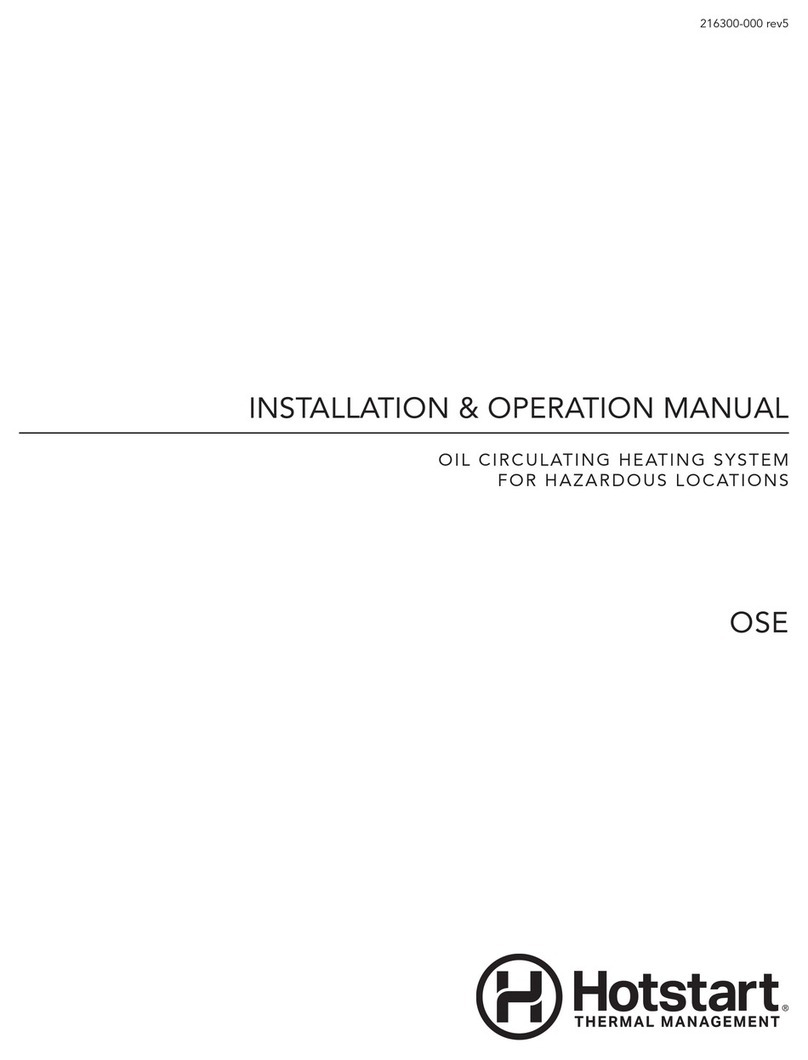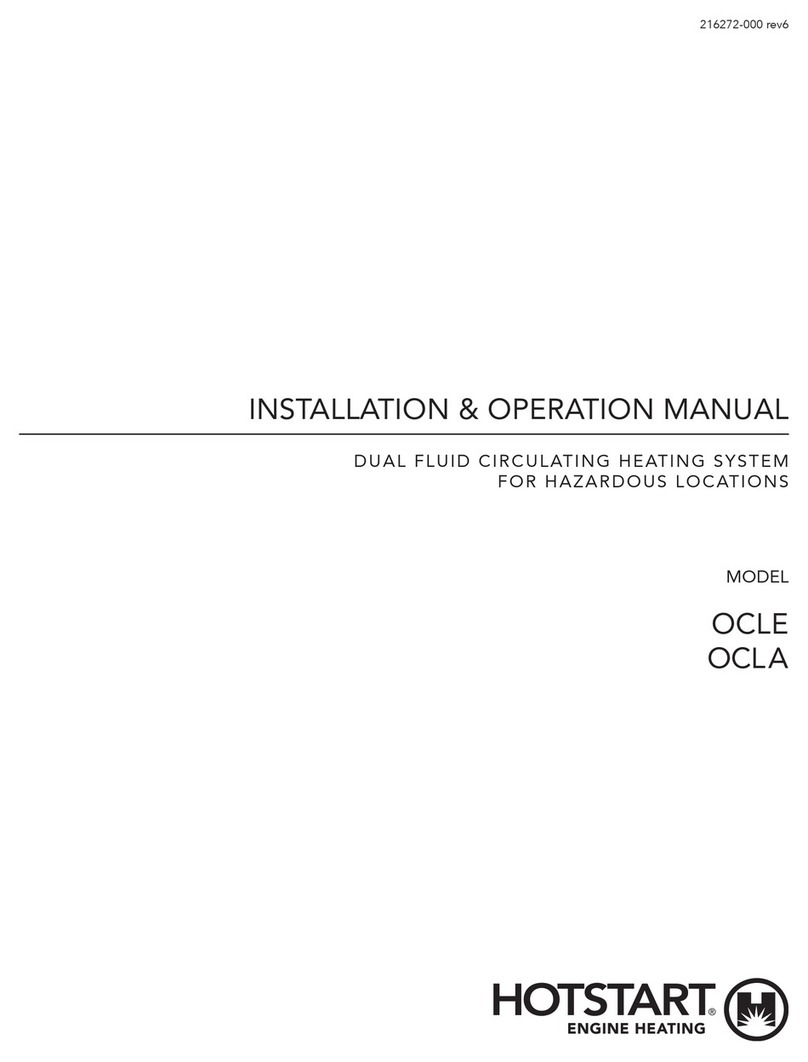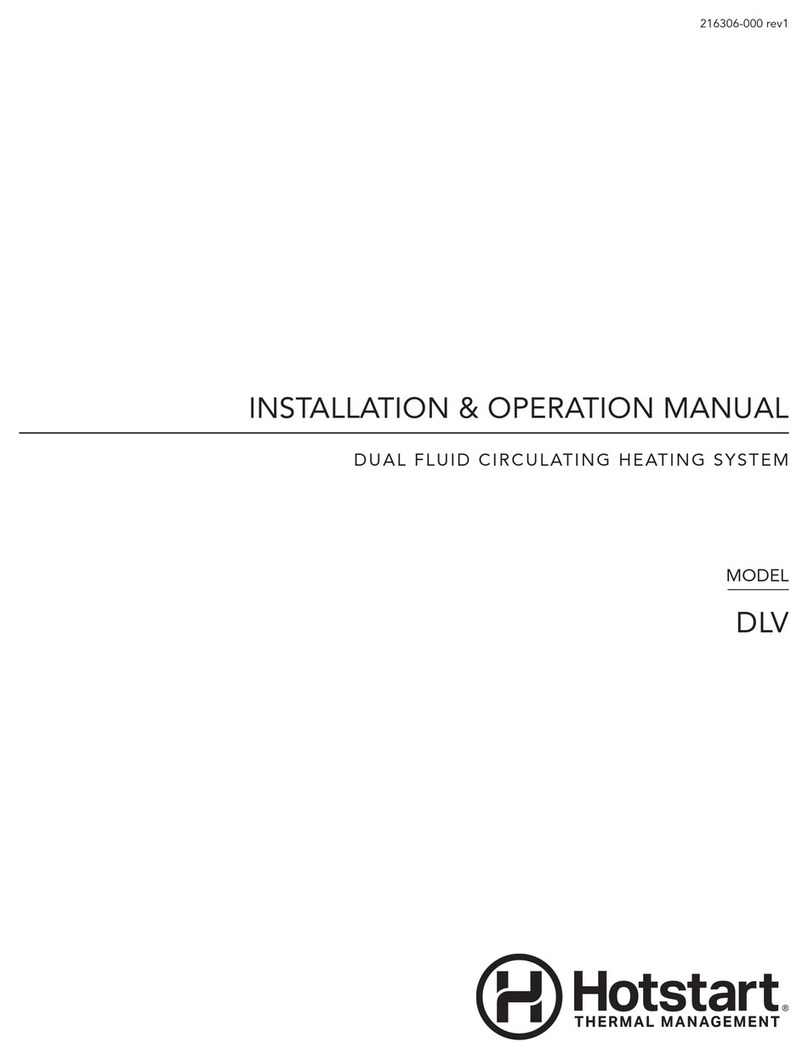
4installation & operation manual | clv heating system
2.1 COOLANT PLUMBING
Heating system damage: Engine vibration will
damage the heating system; isolate the heating system
from vibration. Never mount the heating system or
components directly to the engine. If the heating system
is installed using rigid pipe, use a section of exible hose
to the supply and return ports to isolate the heating
system from engine vibration.
The following illustrations are intended for a locomotive
installation. For non-locomotive engine applications,
general installation principles still apply.
2.1.1 COOLANT SUPPLY
When installing the CLV coolant supply line, refer to the
following Hotstart guidelines (see SECTION 5.1 for
optional coolant install kit components):
• At a minimum, size the coolant supply line
per the pump inlet. NOTICE! Do not reduce
the supply line inner diameter; pump seal
damage will occur.
NOTE: To maximize ow and allow the longest
possible supply line, install the largest
practical inner diameter hose; for most
installations, Hotstart recommends using a
hose with a size larger inner diameter than
the pump inlet.
• Install the coolant suction port as low as
possible on the engine’s water jacket, typically
near the main water drain. See Figure 3.
• The coolant pump is a centrifugal-
type that is not self-priming. It must be
situated below the minimum liquid level
of the engine cooling jacket to ensure
it remains ooded and has a positive
pressure at the inlet.
• To minimize ow restriction, the coolant
supply line must be as short and as straight
as possible. Use elbow ttings sparingly;
Hotstart recommends using sweeping bends
or 45° ttings.
2.1.2 COOLANT RETURN
When installing the CLV coolant return line, refer to the
following Hotstart guidelines:
• Size the coolant return line per the pump
outlet. NOTICE! Do not reduce the return
line inner diameter.
• To minimize heat loss, avoid connecting the
coolant return to any location that will allow
warm coolant to bypass the engine or pass
through radiators or heat exchangers.
• Install the coolant discharge port as high as
possible on the engine’s water jacket on the
opposite end of the suction port; typically
near the aftercooler water line discharge port.
NOTE: To ensure even heat distribution, the coolant
return line may be split and routed to two
return ports. Size both return lines per the
outlet of the heating system. For engines
without an aftercooler, typical installation
points are along the water line from the
radiator to the engine block. See Figure 7.
Install coolant return line as follows:
1. Using appropriate ttings, install a 1 inch full-ow
ball valve at the water discharge outlet before
installing any T-ttings.
2. Place a 1/2 inch T-tting after the shutoff valve to
supply a 1/2 inch line for heating the locomotive’s
accessories. The line may be installed at either of
the following locations:
• the locomotive’s compressor (preferred)
• the locomotive’s expansion tank
(if a compressor connection is not available)
3. Install ttings at the compressor or expansion
tank to accept 1/2 inch hose. See Figure 5 and
Figure 6.
NOTE: If the locomotive has wet cab heaters,
install another 1 inch T-tting after the
shutoff valve to supply a 1/2 inch branch
line to the cab heater drain valve line.
4. Use appropriate ttings after the shutoff valve and
T-ttings to route a 1 inch inside diameter hose up
to the ceiling inside the car body to allow trapped
air to be purged from system.
Figure 3. Coolant suction port installed at main locomotive engine
drain. Note suction port (A) has been installed at the same level as
the drain (B), ensuring CLV pump will draw water from the cooling
system’s lowest point.
AB





